If you find yourself asking “what is customer journey analytics?” you’re not alone. Customer journey analytics is the weaving together of every touchpoint that a customer interacts with, across multiple channels and over time. It connects millions of events into journeys from your customers’ point of view and is a data-driven approach to discovering, analyzing and influencing your customers’ journeys.
Gartner defines customer journey analytics as the process of tracking and analyzing the way customers use combinations of channels to interact with an organization and covers all channels present and future which interface directly with customers.
Customer journey analytics gives marketers and customer experience professionals a powerful tool to understand and engage with individual customers at a personal level, at scale. By analyzing millions of data points in real-time, you can discover the most important customer journeys and prioritize those opportunities that significantly impact business goals like increasing revenue, reducing churn and improving customer experience. In this post, I’ll take a look at what’s driving leading companies to adopt customer journey analytics. I’ll also describe how a telecom provider is using it to improve CX and a retailer is using it to reduce online cart abandonment.
Maximizing satisfaction with customer journeys has the potential not only to increase customer satisfaction by 20 percent but also to lift revenue by up to 15 percent while lowering the cost of serving customers by as much as 20 percent.
—McKinsey: The three Cs of customer satisfaction: Consistency, consistency, consistency
Customer Experience is Driving the Need for Customer Journey Analytics
Customer experience is everywhere. From marketing to customer service to the boardroom, it’s now generally recognized that personalized, efficient and engaging customer experience drives customer acquisition, brand loyalty and customer lifetime value (LTV).
According to Forrester Research, better customer experience actually correlates with higher revenue growth. CX drives three types of customer loyalty: retention, enrichment, and advocacy. Increased customer loyalty in turn tends to drive increased revenue growth.
The focus has shifted to developing a unified view of the customer as she interacts with your brand and personalizing her experience across channels, locations and always in the moment. To achieve this unified customer experience, customer analytics must evolve from retrospective reporting to real-time, behavior-driven engagement. Customer journey analytics is the means to enable this transformation.
Check out How to Improve Customer Experience Using Journey Analytics for more on how customer journey analytics makes CX actionable by directly tying customer experiences to revenue, profitability and other hard metrics on which executives are measured.
Why Customer Journey Analytics is Different from Journey Mapping
Customer journey mapping has been growing in popularity over the past few years, not only with customer experience professionals, but also within marketing, customer service, user experience (UX), product management and IT.
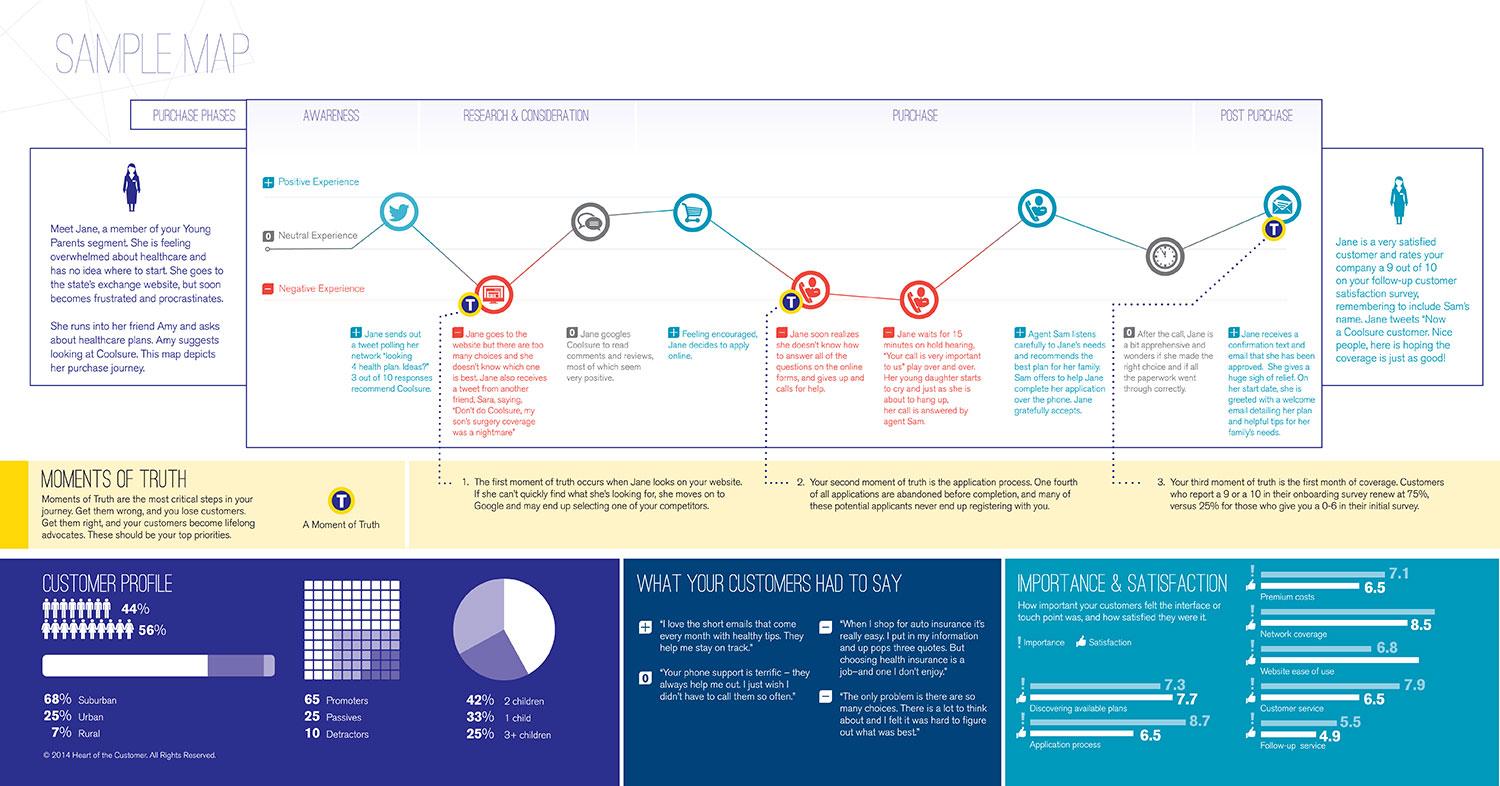
Although they share a common goal, customer journey analytics and journey mapping take very different approaches. More importantly, the results also differ in five very distinct ways:
Data Driven. Pictures without data are just stories. Data is what makes the picture come alive. The key difference between customer journey mapping and customer journey analytics is that the latter is based on hard data—millions or even billions of individual interactions—rather than the subjective interpretation of interviews or observations of a small number of ‘representative’ customers.
Comprehensive. Journey mapping exercises tend to simplify the endless variety of customer journeys and boil them down to a single representative journey. In contrast, customer journey analytics reveals the wide variety of paths that real customers actually take across channels, and identifies the most significant ones.
At Scale. Many organizations employ journey mapping to successfully create a few high-level macro-journeys. But, it’s extremely time-consuming to use journey mapping techniques to flesh out and visualize all the detailed steps that make up specific parts of the overall journey (a micro-journey). Customer journey analytics tools can let you view the macro journey, as well as provide endless opportunities to drill-down and discover the micro-steps that comprise them.
Real-time. Unlike the static snapshots that journey maps represent, journey analytics are inherently time-based, which allow you to see how journeys change over time. This enables marketers, for example, to identify opportunities for real-time engagement based on a data-driven understanding of customer behavior.
Actionable. Pictures are great for internal communication and aligning employees across your organization around a common, customer-focused perspective. But after you determine which parts of the journey are providing the poorest experience, how do you act on them? Customer journey analytics enables marketing and CX teams to not only discover which journeys are most important, but automatically engage with each customer at the right time, through the best channel and in a personalized way.
Check out Make Your Journey Maps Measurable with Customer Journey Analytics for a deeper dive on how journey analytics can bring your journey maps to life and make them actionable.
Journey Analytics Can Quickly Answer Complex Questions
A journey mapping project for a financial services firm might uncover, based on a series of interviews, that clients usually place a phone call to their financial advisor before purchasing a new investment product. By using journey analytics, you can go a step further and discover the answers to much more complex questions, such as:
- What percentage of clients take this path?
- What steps did clients that ultimately purchased the product take prior to the call?
- What steps did clients that did not purchase take prior to the call?
- When is the best time to interact with a given client?
- What is the best channel to interact with the client?
- What other paths do clients take?
- Which kinds of clients take each path?
- How do we add value for each client in a given context?
Why Traditional Analytics Approaches Often Fail
Today, companies are looking to switch from product-centric to customer-centric organizations. The goal is to bring together all the different pieces of data in a contextual manner and make an offer to the customer that is the best possible one in that moment. To do that, they have to know the answer to many complex questions, such as the ones listed above. Companies are struggling to answer these types of questions using traditional analytical tools and approaches due to five main limitations:
Volume and velocity of data. The number of customer touchpoints and the volume of data produced by each has exploded. Websites, social media, point-of-sale systems, call center systems and new IOT data sources are generating massive volumes of data, often continuously.
Data integration is difficult and time consuming. Data exists in silos across different systems. Extracting data out of the original sources and integrating it has led to innumerable challenges of data mismatches, missing and bad data that makes traditional data integration projects stretch out over weeks or even months.
Scarcity of skills and resources. Even after integrating data, analyzing it in a practical and actionable way often requires skilled data scientists, who are difficult to hire and typically have more projects than they can possibly complete.
Lack of real-time analytics. Traditional analytical approaches often create a historical view which in today’s world of rapidly shifting consumer behavior, is rendered useless before it can be acted upon.
Gap between analytics and action. Existing marketing systems typically automate engagement for only one or at most a few channels, which cannot capture your customers’ real cross-channel journeys. Even more recent journey orchestration platforms typically take an inefficient, rules-based approach that’s difficult to scale and manage as the number of rules increases over time.
Customer journey analytics platforms are designed to overcome these challenges. A superior journey analytics tool is built to aggregate and present data in an easy, practical and efficient way to facilitate engagement with your customers at the optimal time via the best channel.
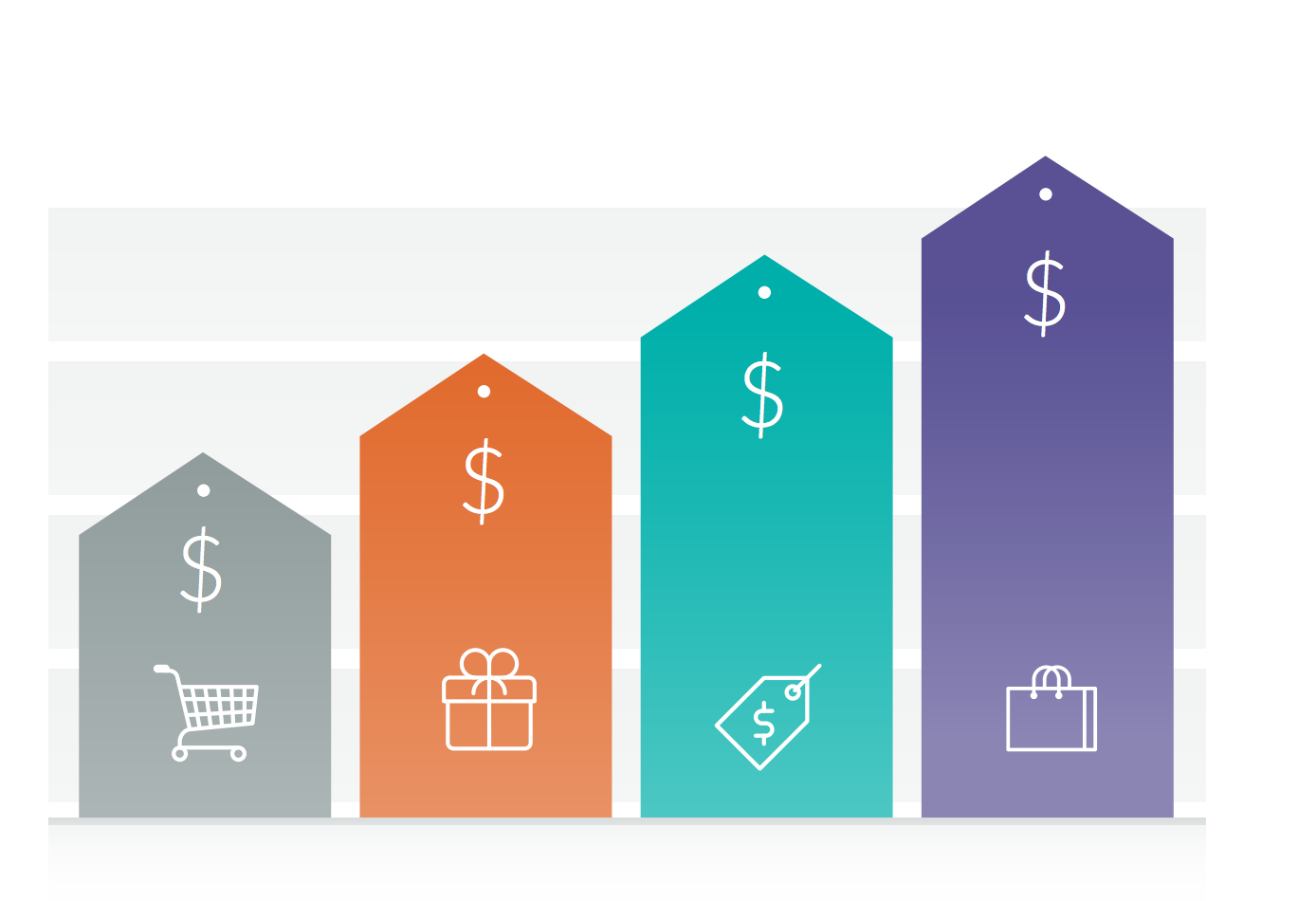
For a deeper dive on why traditional analytics approaches don’t deliver, check out Why Traditional Marketing Analytics Tools Fail and What To Do About It.
Customer Journey Analytics Delivers Immediate Business Impact
Leading companies are now using customer journey analytics to attain real business impact. Some of the most frequent applications include:
Boost customer acquisition. By identifying the high-impact journeys, path to purchase, and uncovering purchase intent early, customer journey analytics can help marketers boost customer acquisition.
Increase retention. Loyalty marketers can use customer journey analytics to predict customer behavior, understand customer preferences, and recognize which actions work best in a given situation. It gives you the power to reduce churn by identifying and engaging with at-risk customers before they switch to competitors.
Grow revenue. Customer journey analytics can help you grow revenue in a number of different ways. By identifying cross-sell/up-sell opportunities and triggering personalized communication at the right moment and through the right channel it can help you increase revenue per customer. It helps identify tactical enhancements that can be made throughout the journey to reduce costs and grow sales. It can also be used to uncover the highest impact segments to grow revenue.
Improve Customer Experience. By discovering bottlenecks in the customer experience, journey analytics can help you improve customer experience. It is far more predictive of customer satisfaction than other forms of analytics. According to a recent McKinsey study, employing a journey based approach at a leading European energy retailer led to 50 percent increase in customer satisfaction and a 15 percent reduction in the company’s customer-service cost.
Maximize Customer Lifetime Value. Customer journey analytics can reveal which factors underlying customer lifetime value are most significant and help you identify ways to maximize it.
Increase Marketing ROI. By measuring and improving cross-channel efforts, journey analytics can help you get more value from your existing marketing technology stack, thus improving results and lifting your return on marketing investment (ROMI).
For more real-life examples of how leading companies are winning with journey analytics, check out 5 Ways Customer Journey Analytics Can Impact Your Business Today.
Use Case: A Telecom Company Prioritizes Areas to Improve Customer Experience
A leading telecom and media company used customer journey analytics to discover the most important areas for improvement in their online self-help mechanism, as part of an overall effort to improve customer experience. They analyzed customer journeys to discover the paths that led customers from the main self-channels to the customer service center. Within minutes, they were able to drill down into the self-help channel that was driving the highest call volumes and also had the highest failure rate in resolving the issue.
Using customer journey analytics, they analyzed customer behavior to identify the most frequent and predictive paths that customers took after participating in each of the self-help mechanisms. This was the key to unlocking the primary customer failure points and areas most in need of improvement within the Help Forum. Moreover, they were able to connect these failure points to customer churn and see how many customers went on to disconnect the service, as well as view the aggregated revenue loss associated with each failure point. With these views they were then able to prioritize their improvement initiatives.
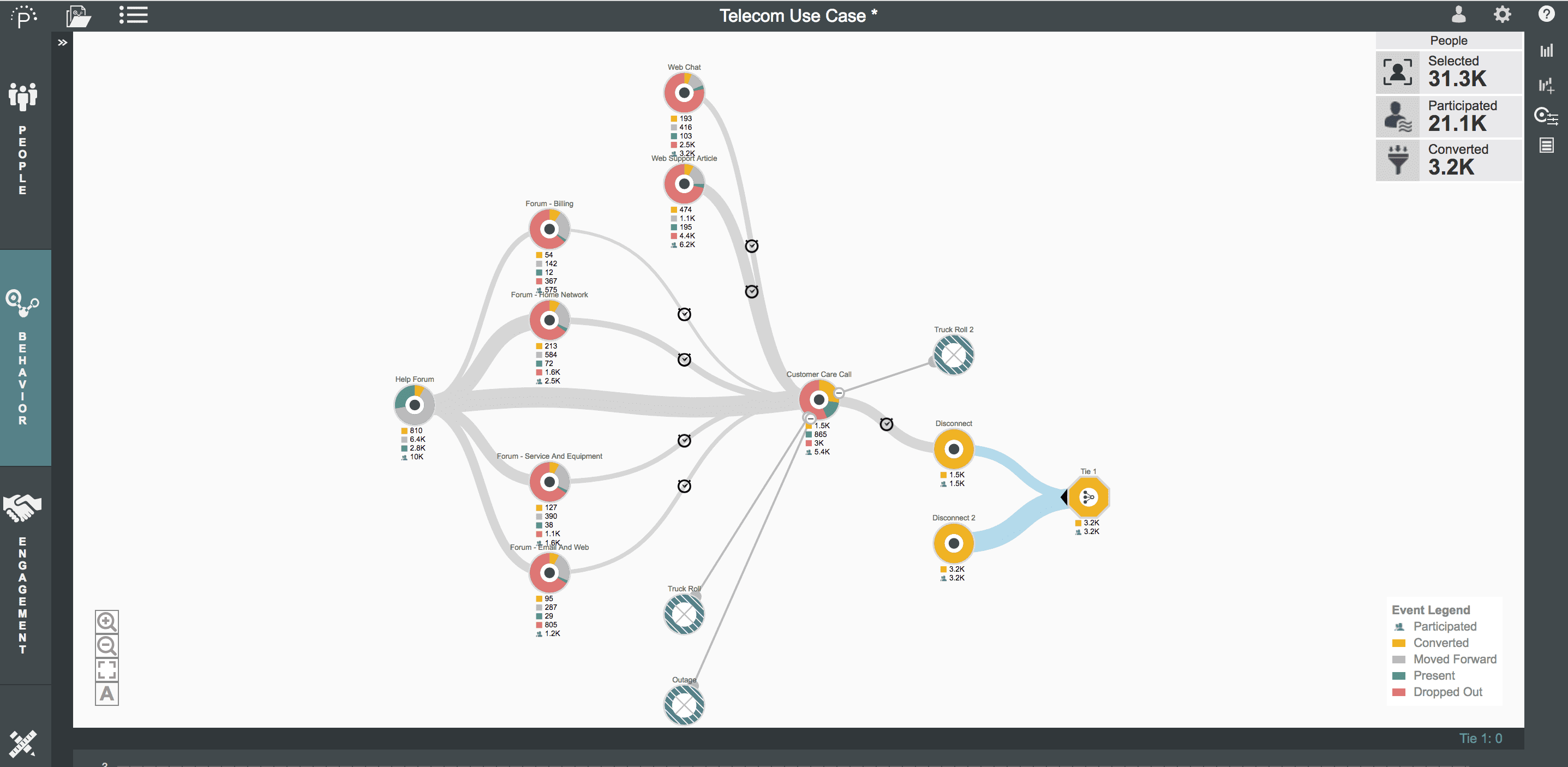
Use Case: A Retailer Uses Customer Journey Analytics to Reduce Online Cart Abandonment
To illustrate how customer journey analytics can yield actionable results, picture yourself as a marketer at an online retailer of women’s clothing who’s been asked to reduce your cart abandonment rate.
Using customer journey analytics, you start by selecting a timeframe and seeing how many customers viewed any item and added it to their cart. In just a few seconds, you can discover how many of those customers actually bought the item afterwards versus how many abandoned their online carts.
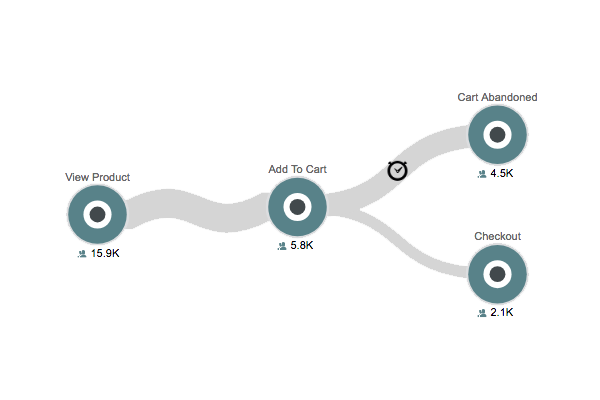
Next you run an experiment by sending an email to anyone that adds an item to their online cart, but doesn’t complete the purchase within 24 hours. The email contains offers on related products that the customer may not have been aware of.
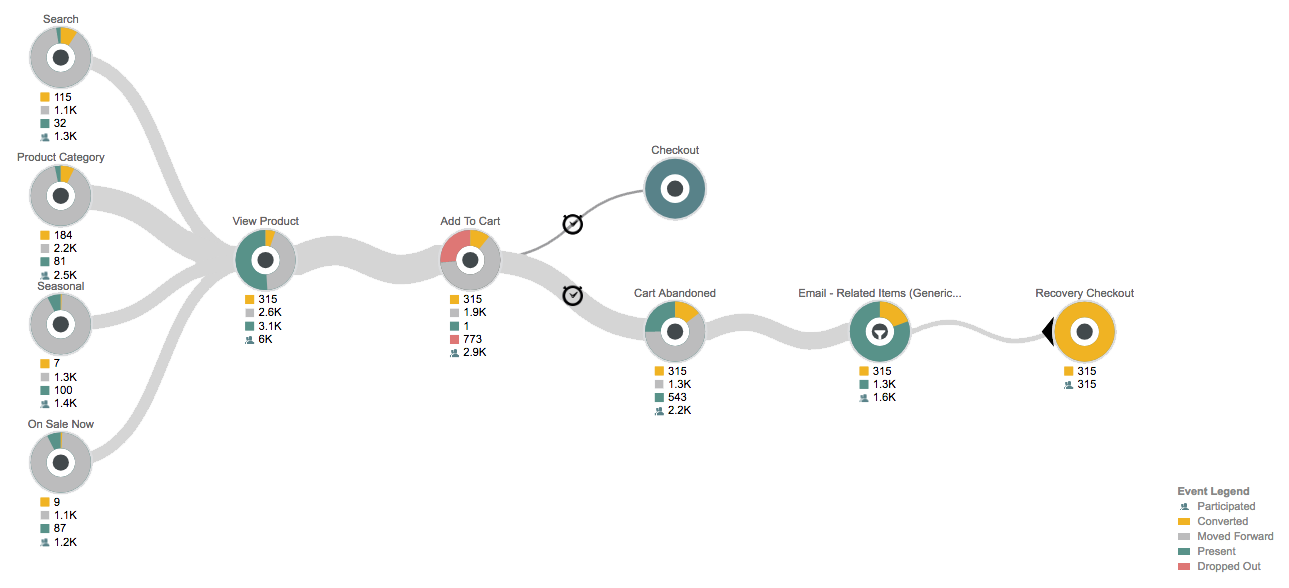
Using machine learning, you quickly sift through millions of customer interactions to find the most significant paths customers took prior to putting a product in their cart. In a few seconds you determine the most significant paths are using the ‘site search’, browsing a ‘product category’ page, browsing the ‘seasonal’ items page and browsing the ‘on sales now’ page. Analyzing the expanded journey reveals that the first email is only working with those customers that were either searching or browsing for product (see figure above).
Now It’s Your Turn
Today, leading companies are increasingly thinking in terms of end-to-end customer journeys and using customer journey analytics to understand behaviors and shape experiences. By revealing the real-world paths your customers actually take, as they engage with your company across channels and over time, customer journey analytics enables you to focus on the highest impact journeys and deliver real-time, personalized engagement at scale.
Feature image, ‘Increasing Revenue Along the Customer Journey’ graphic and all screenshots courtesy of Pointillist). Sample Customer Journey Map courtesy of Heart of the Customer. A version of What is Customer Journey Analytics? originally appeared on the Pointillist blog.



